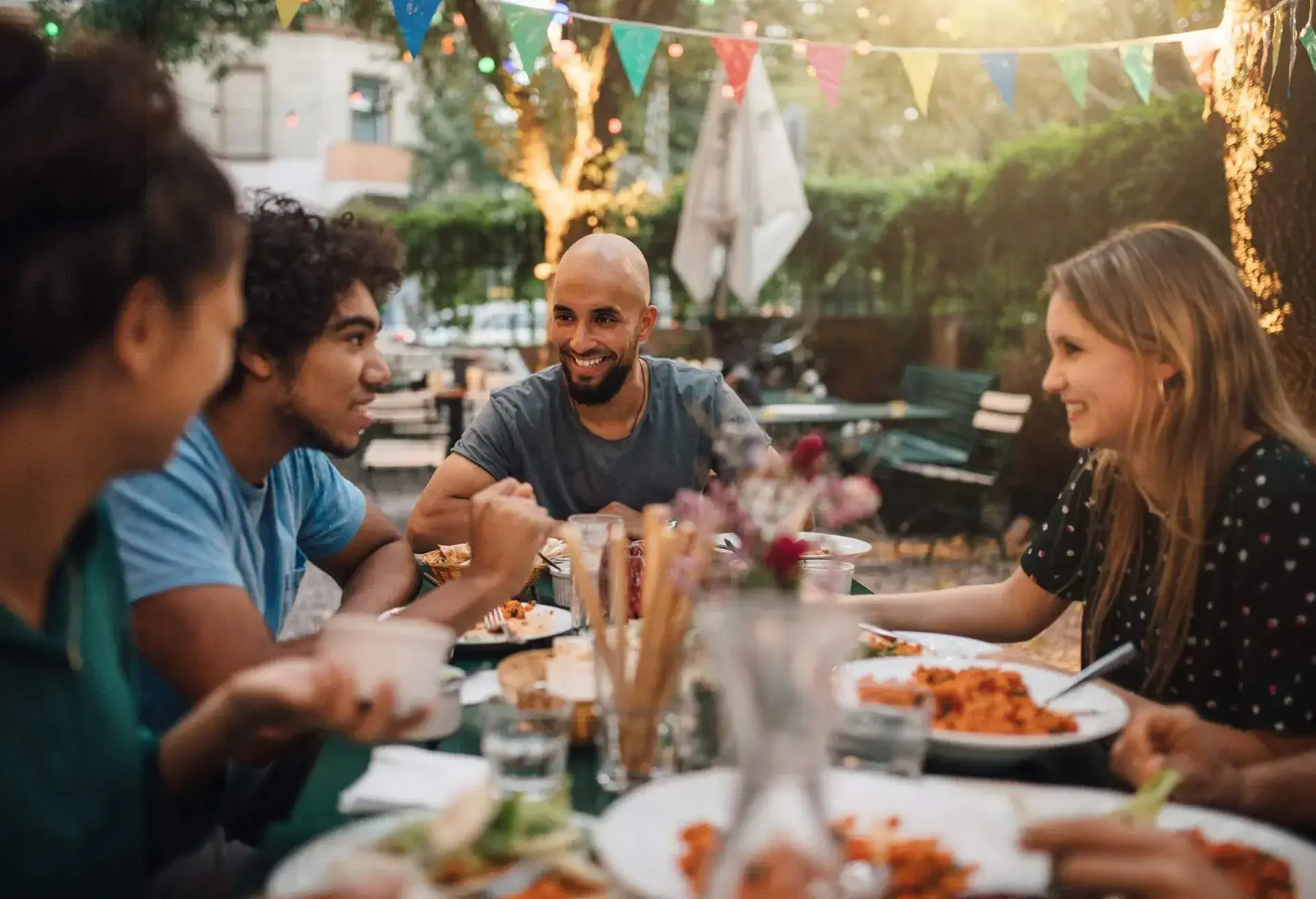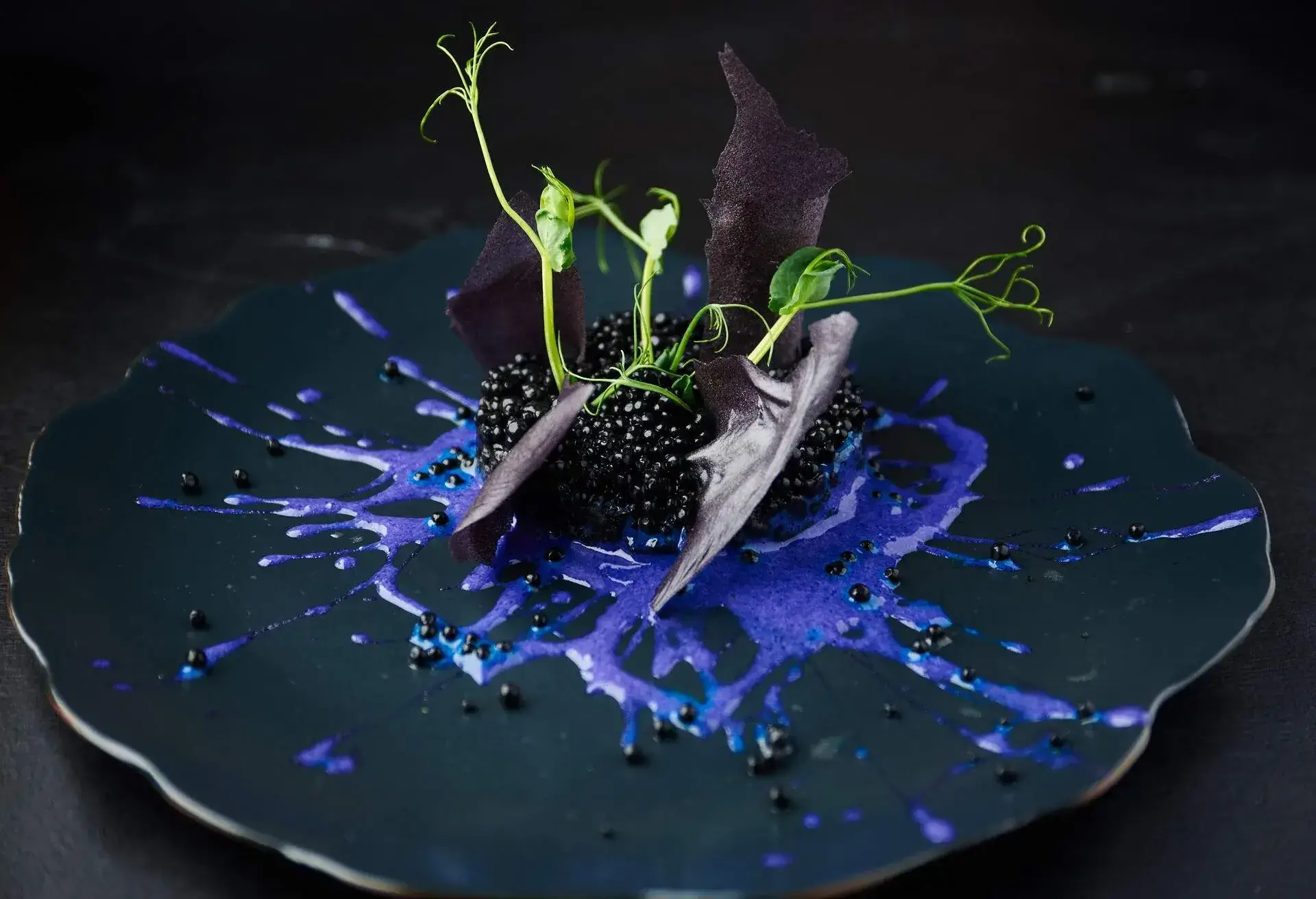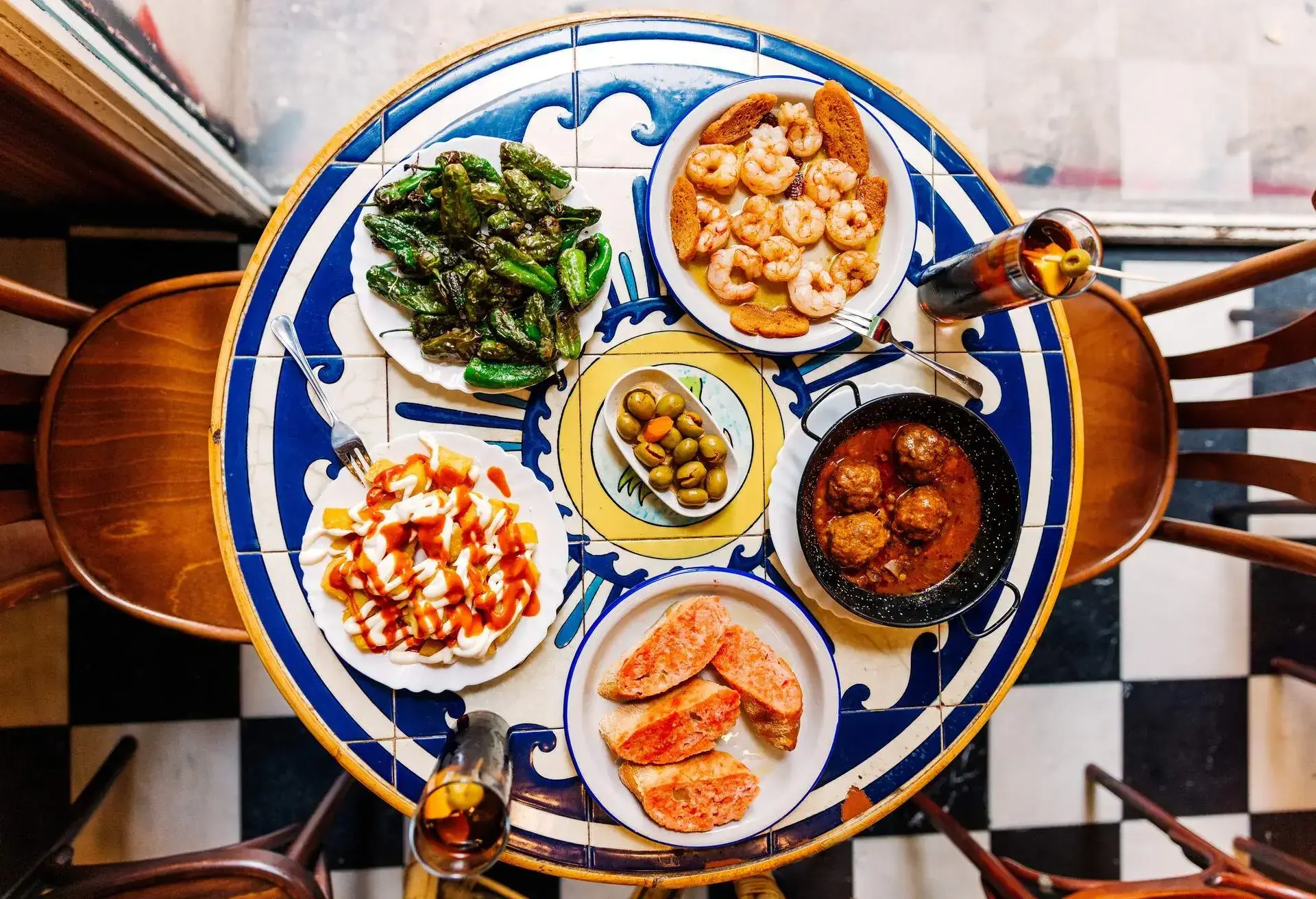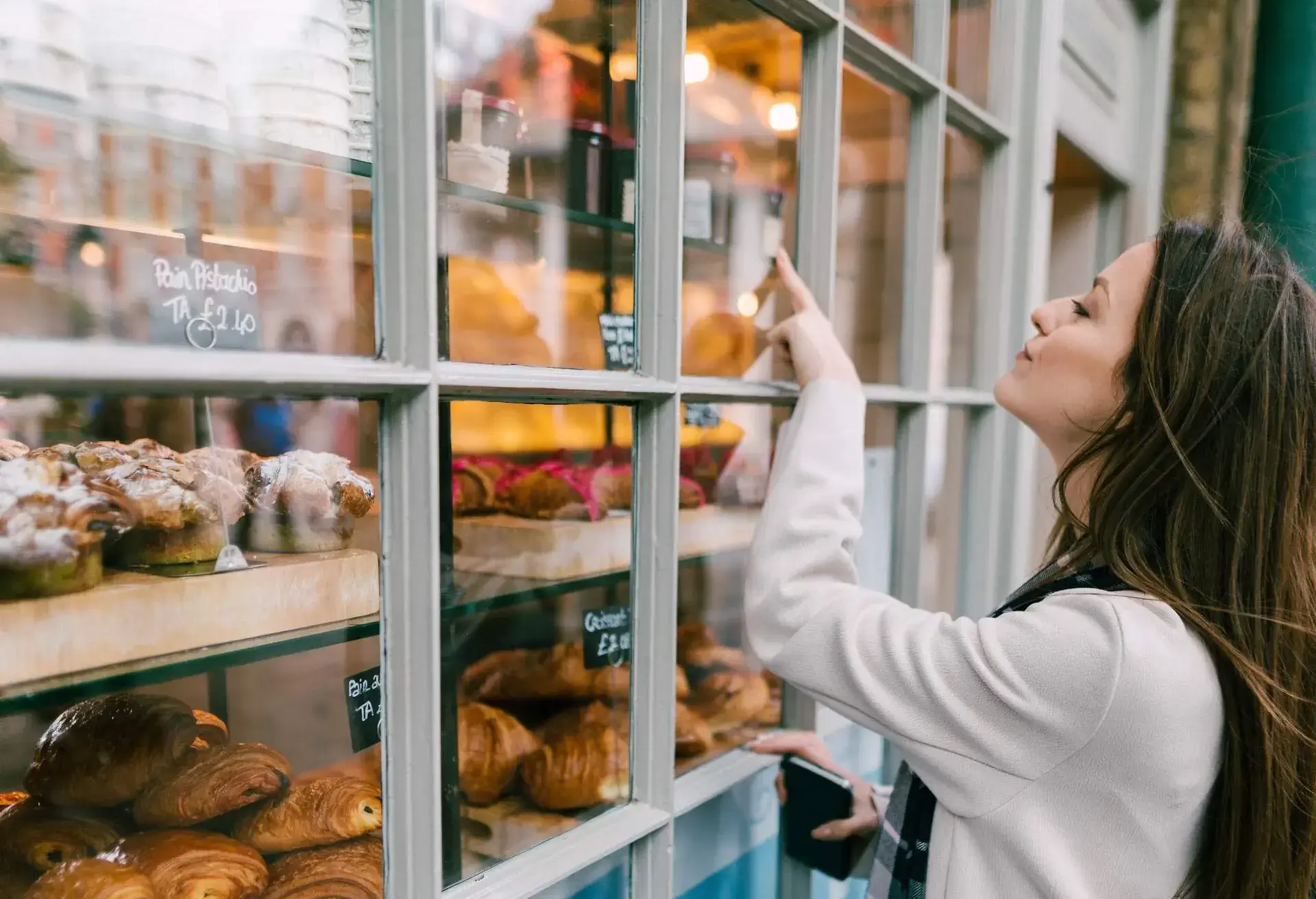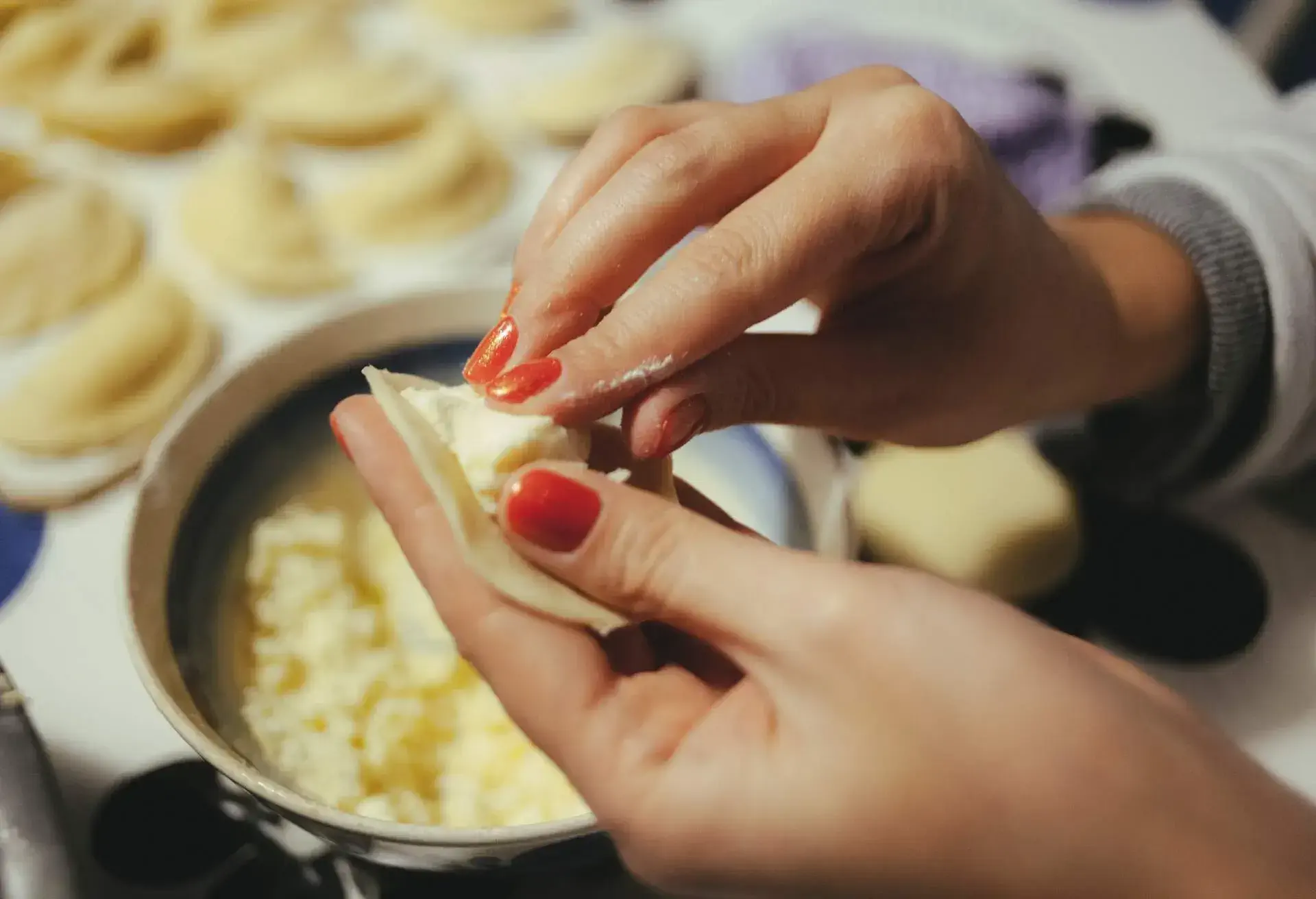Germany’s long-standing culinary history is not only influenced by its rural roots and agricultural traditions but also by the many immigrants that now call it home. Did you know, for example, that the Doner kebab was invented in Berlin by Turkish immigrant workers? Although traditional food in Germany has distinctive regional flavours, the common theme is rich, hearty flavours that can’t be replicated anywhere else; they are utterly scrumptious.
Traditional German food: Sausages
One of the main traditional German foods is sausages, but not just any old sausages, so let’s start here. Germany has a long tradition of sausage-making and is thought to boast over 1,500 varieties. The Germans have certainly perfected the art of the sausage, and it’s as good a place to start as any.
1. Currywurst
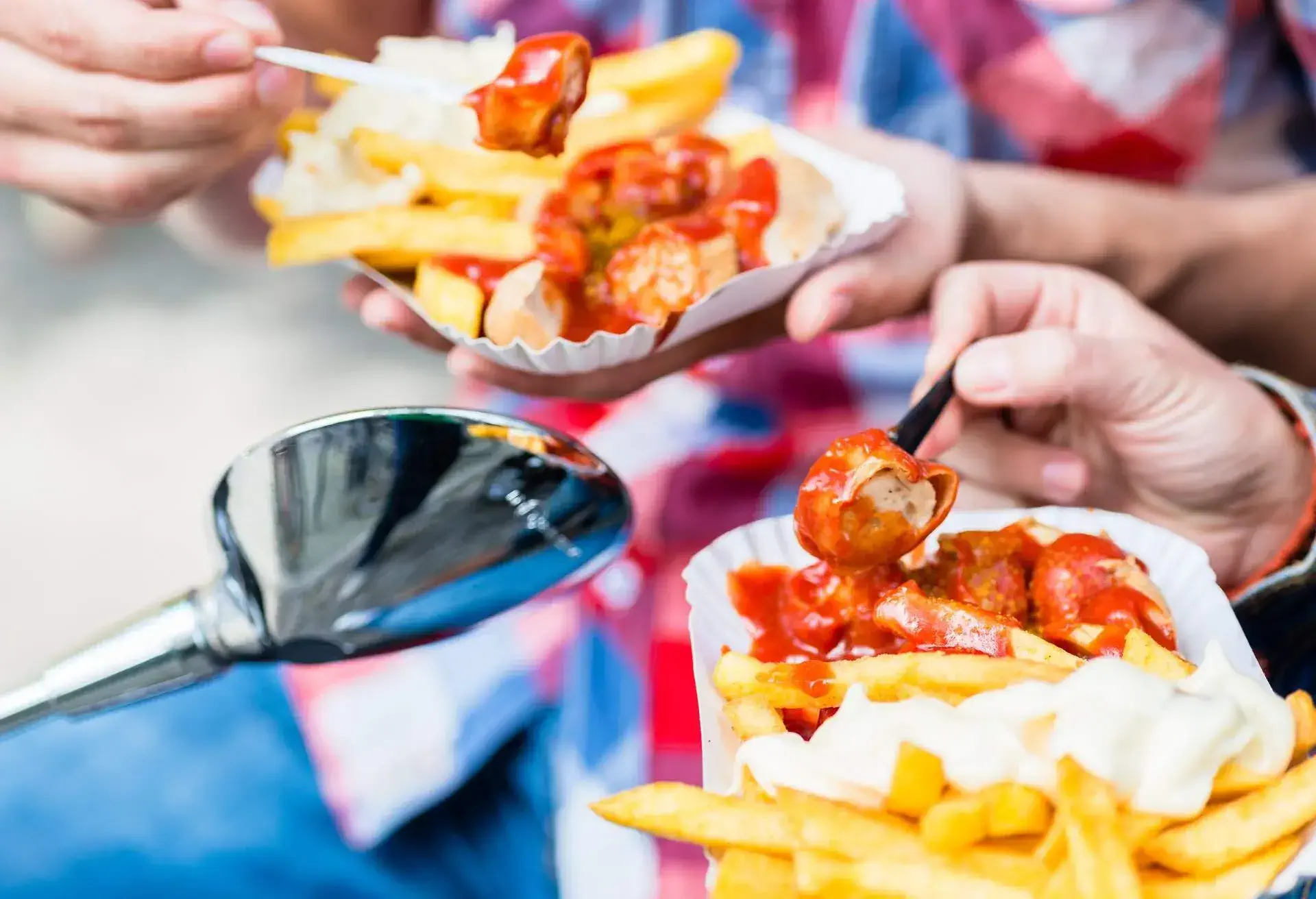
There is no dish to better represent the humble Wurst (sausage) than the Currywurst. Its origin is attributed to one Herta Heuwer, a Berlin woman who obtained some curry powder and ketchup from British soldiers just after the Second World War. She mixed these up to serve as a sauce with grilled sausages, putting the city of Berlin on the culinary map. Today, the Currywurst even has a museum dedicated to it!
This traditional German food of Berlin has since become its most popular street snack, and you’ll find a stand selling it on almost every street corner. Steamed sausages are chopped up and then covered with this spicy, tasty sauce. Having Pommes (chips) as a side is highly recommended, but if you’d rather have bread, the sausages are still just as delicious.
2. Bratwurst
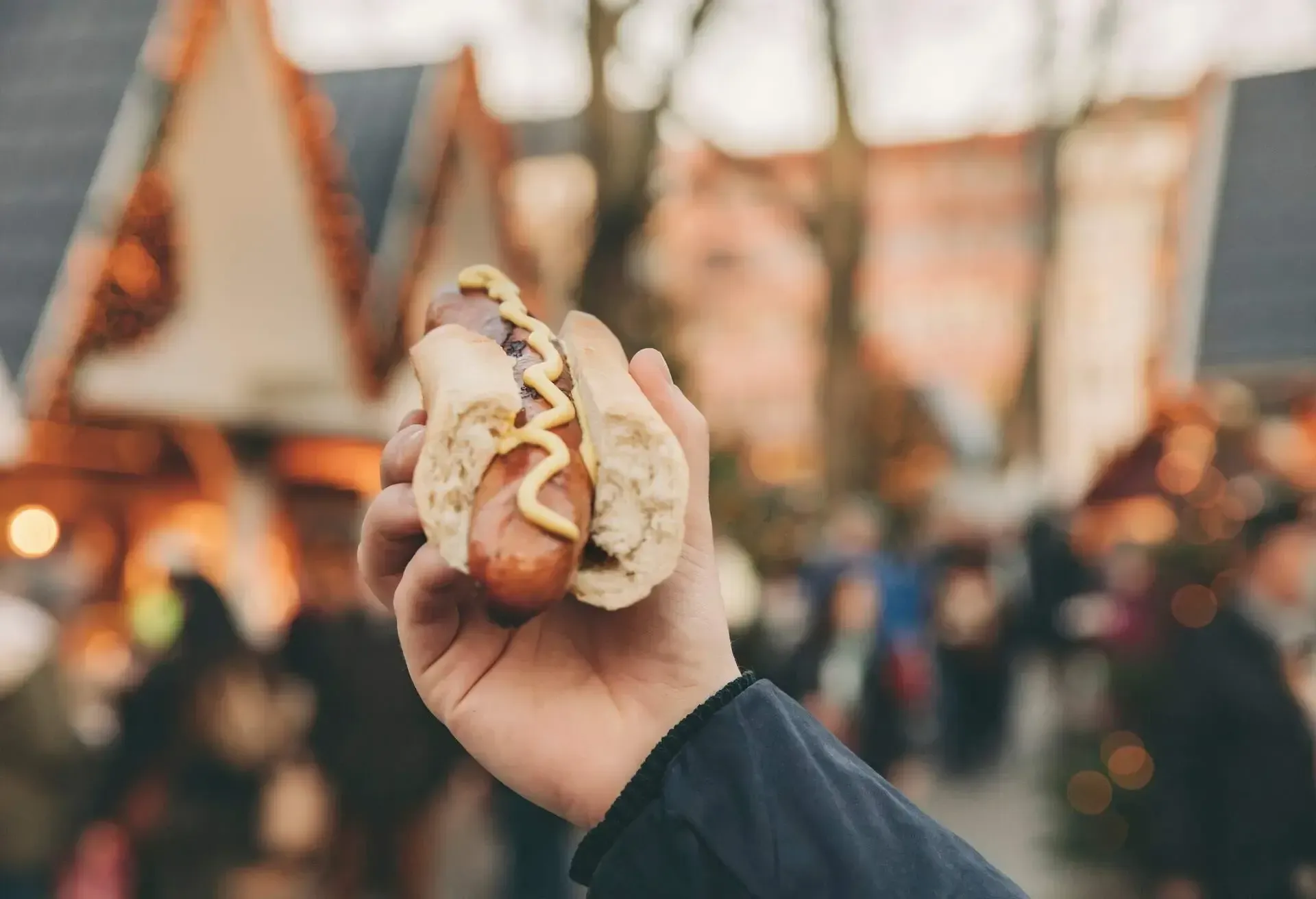
Giving the Currywurst a run for its money is the Bratwurst, believed to be the most popular German street food going. This delicacy can be found all across Munich, although variations exist in different parts of the country. Usually made from pork and well-seasoned, it is grilled on a BBQ, resulting in sausage with a crispy, browned skin.
As a fast food, it is served on a bread roll and often smothered with mustard or ketchup. There’s even a Bratwurst museum in Thuringia, easily reached by train from Frankfurt.
Meats
Traditional food in Germany is very meat-heavy. You will find meat served at nearly every meal, including breakfast. Let’s dig into some of the most popular meat dishes.
3. Königsberger Klopse/Kochklopse
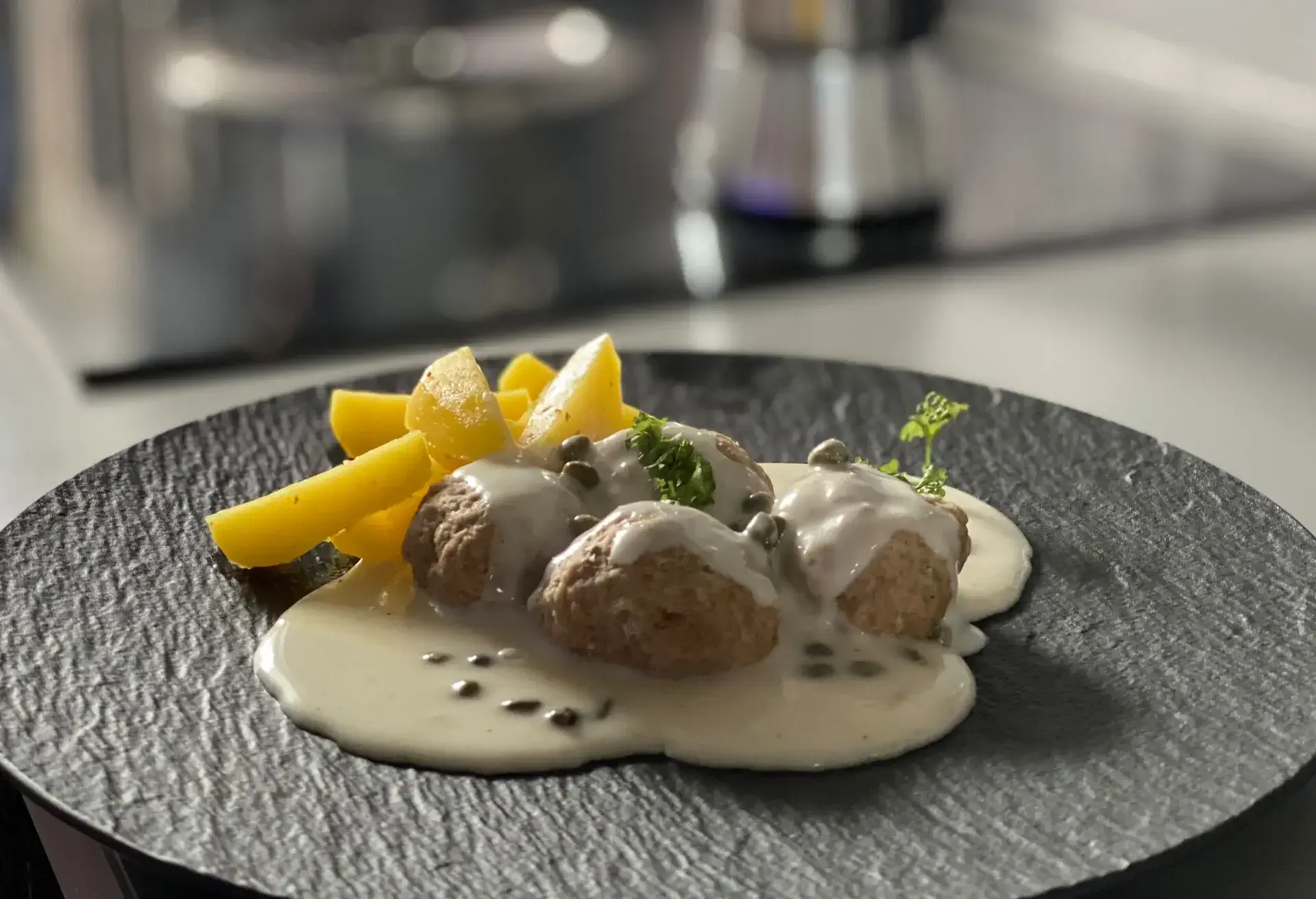
Almost every country serves meatballs in one form or another, and Germany’s superior version is called Königsberger Klopse. An example of a dish with political influence, the name was changed to Kochklopse to avoid embarrassment when the town it was originally named after was annexed by Russia.
Made from minced veal, onions, eggs, anchovies, pepper, and other spices, the meatballs are served with a refreshing caper and lemon sauce that distinguishes them from other meatballs. The dish can be found in restaurants across Germany but is especially popular in Berlin and Brandenburg.
4. Rouladen
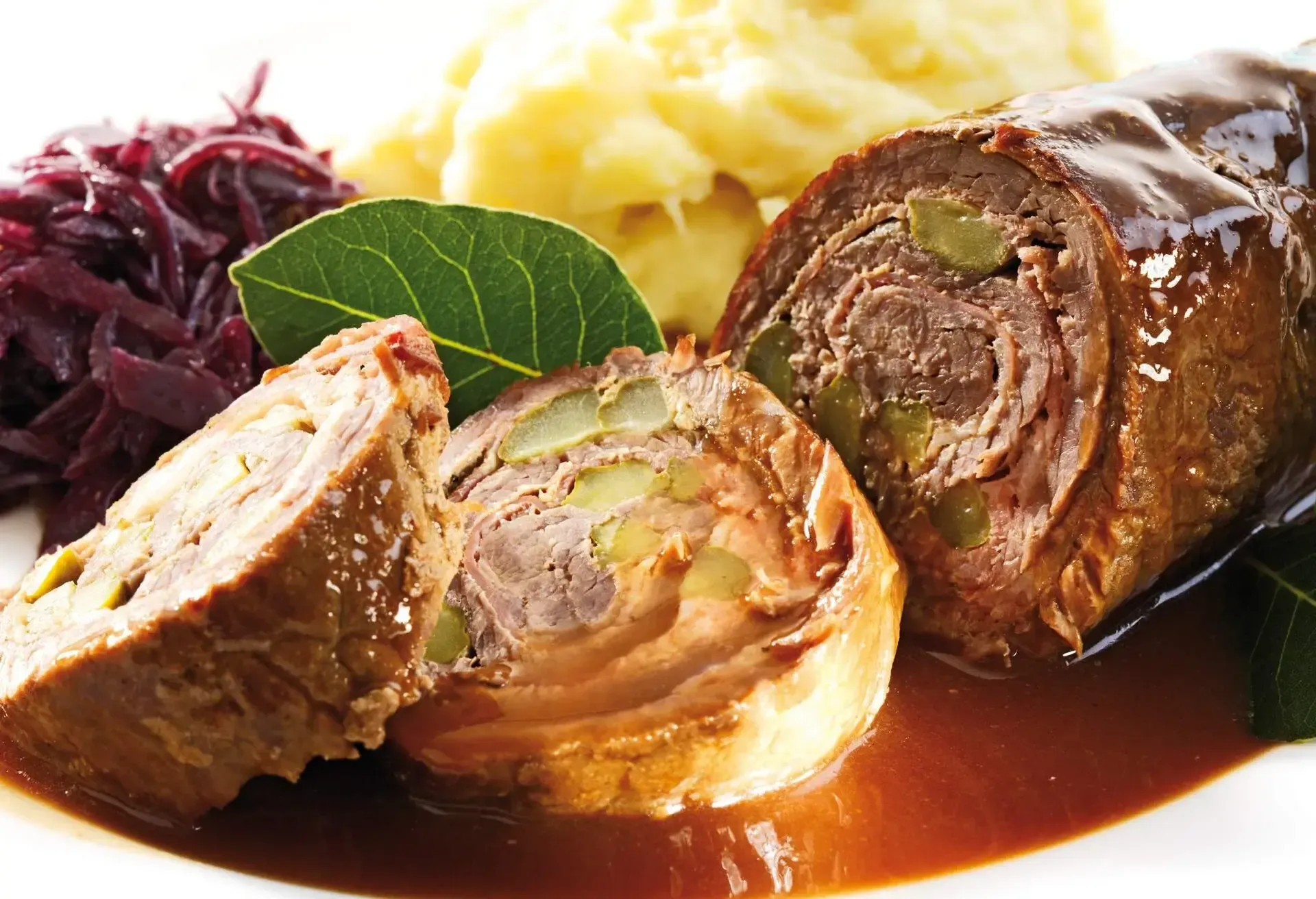
Rumoured to have French origins, which would explain their name, Rouladen has become a firm favourite in Germany, especially in the Saxony region. This is a dish that packs a punch, given the nature of its ingredients.
Bacon, pickles, onions, and mustard are wrapped in thinly sliced top-quality beef (you can find versions with veal), which is then well seasoned and roasted in red wine. The juices from the roasting pan are made into a gravy to be poured over the dish on serving. Have yours with either potato dumplings or mashed potato and a side of red cabbage – you’ll thank us later.
5. Sauerbraten
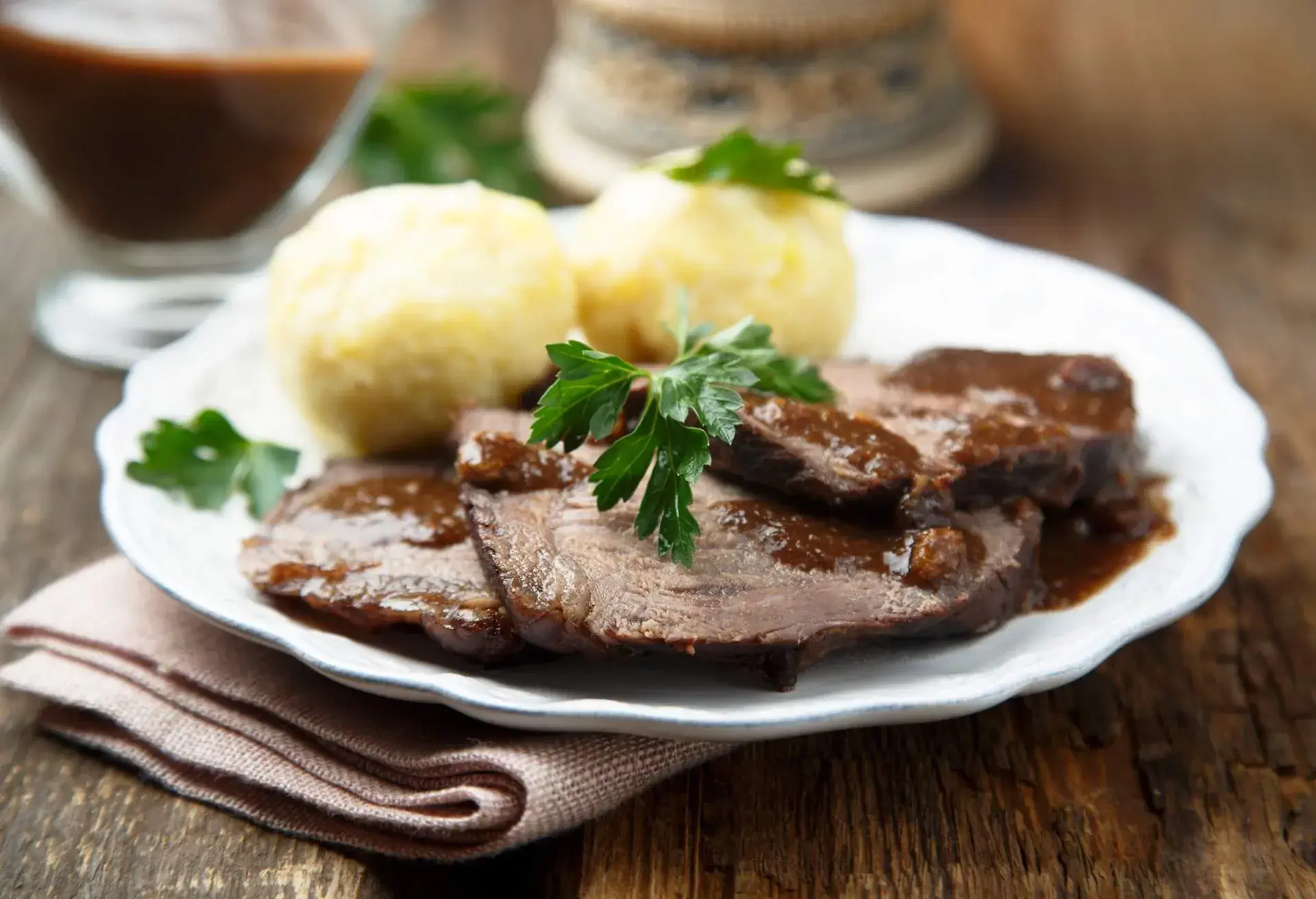
Now we’re talking. There’s no need to miss out on Sunday roast whilst holidaying in Germany. Sauerbraten is Germany’s version of a roast and is one of its national dishes, with different versions available in the country’s various regions. Beef, pork, or veal is marinated for days, sometimes weeks, in red wine vinegar, herbs, and spices and is then slowly braised.
It is absolutely delicious; have it accompanied by potato in one of its various forms, and your pictures will be the envy of everyone back home.
6. Schweinehaxe
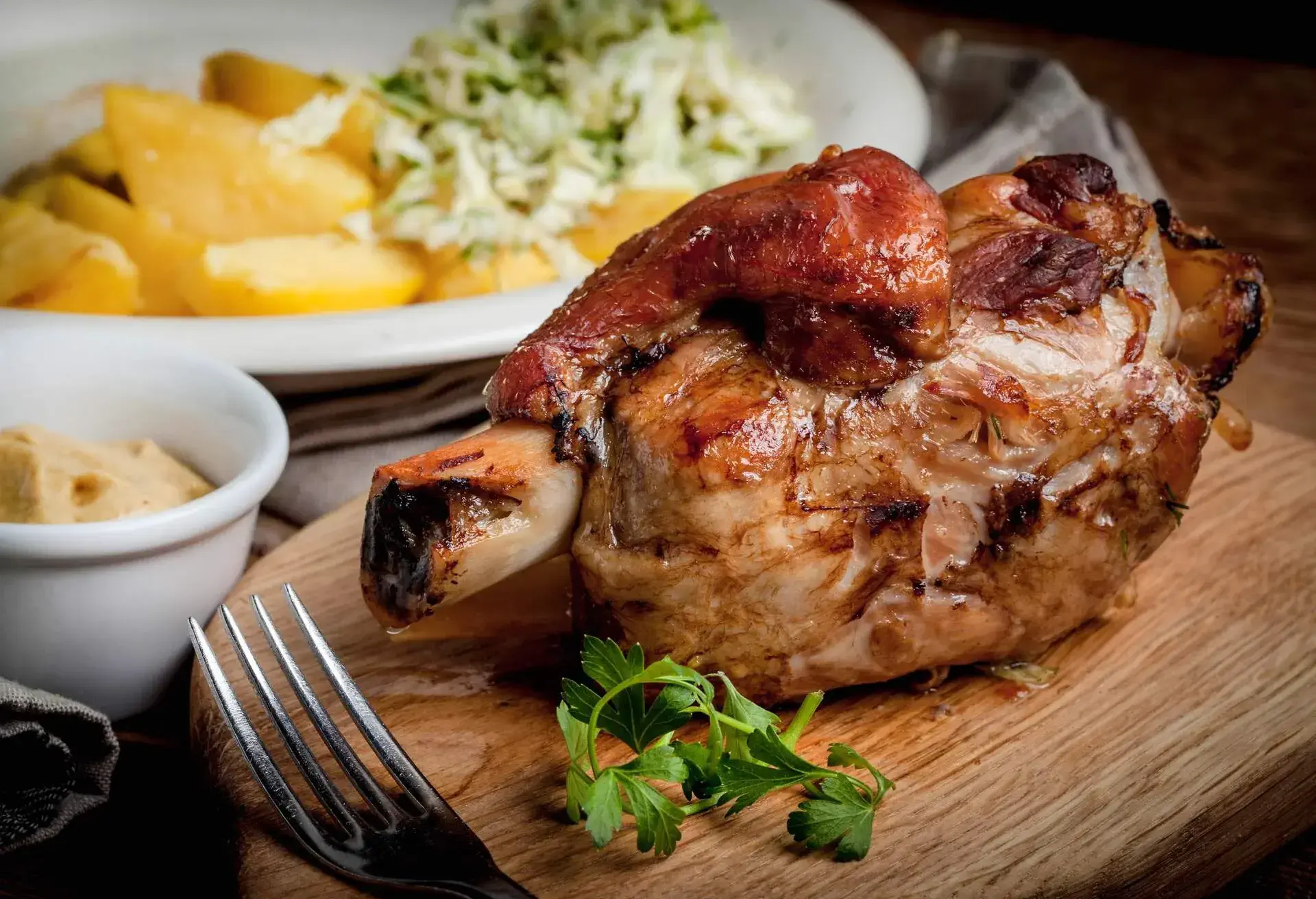
Are you an adventurous eater? Then Schweinehaxe, a pork knuckle, is the somewhat unusual, delectable dish for you. A Bavarian favourite, the meat is marinated for several days (have you noticed a common theme?) or up to a week, depending on the size of the knuckle, with caraway seeds, pepper, and various herbs.
It’s then roasted over low heat for hours until the skin is crispy (think crackling); the meat is so tender that it falls off the bone. As usual in Germany, there’s no better way to have your Haxe than with potatoes of your choice and cabbage. One of the best-known places to try this dish is Munich’s most famous brewery, the Hofbräuhaus. You’ll also find it served in many more of the city’s top restaurants.
7. Schnitzel
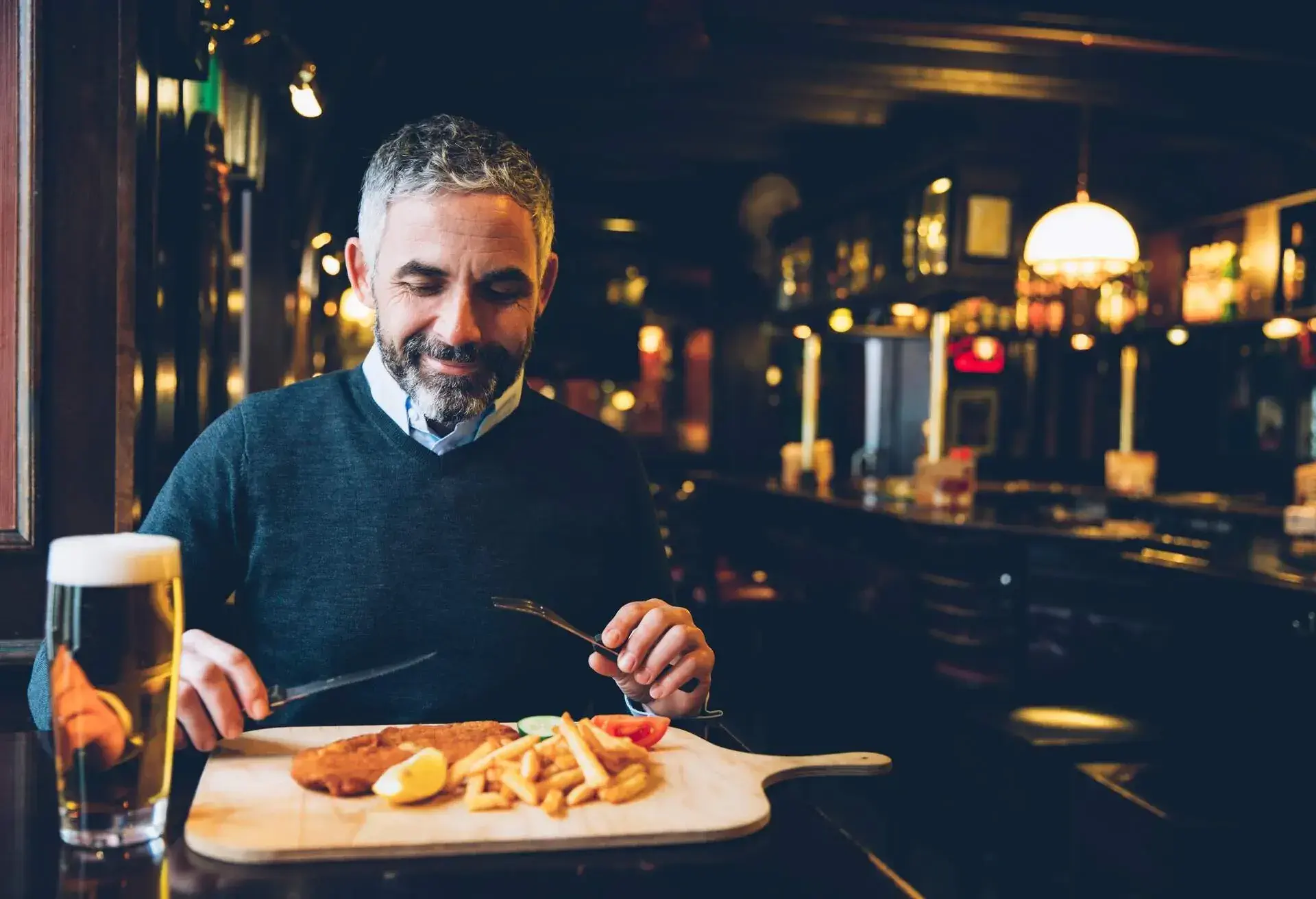
A dish whose origin invokes many a debate; is it German, Austrian or Italian? All these countries have their own versions of it, and, ultimately, it doesn’t matter; schnitzel is most definitely a significant part of traditional German food, and it’s simply delicious.
In Germany, flattened pork, veal, or turkey cutlet is coated in flour, egg, and breadcrumbs and then fried, rendering it crispy and tender in equal measures. What’s left for you is to pick from one of the many sauces available, like mushroom, cream, or bell pepper sauce, and to select your accompaniment from a choice of the German staple – potatoes.
Vegetarian traditional German food
We’ve established that traditional German food is heavy on meat, but it would only be fair to throw in a few vegetarian options. There are even vegetarian versions of Rouladen, but below are my top picks.
8. Käsespätzle
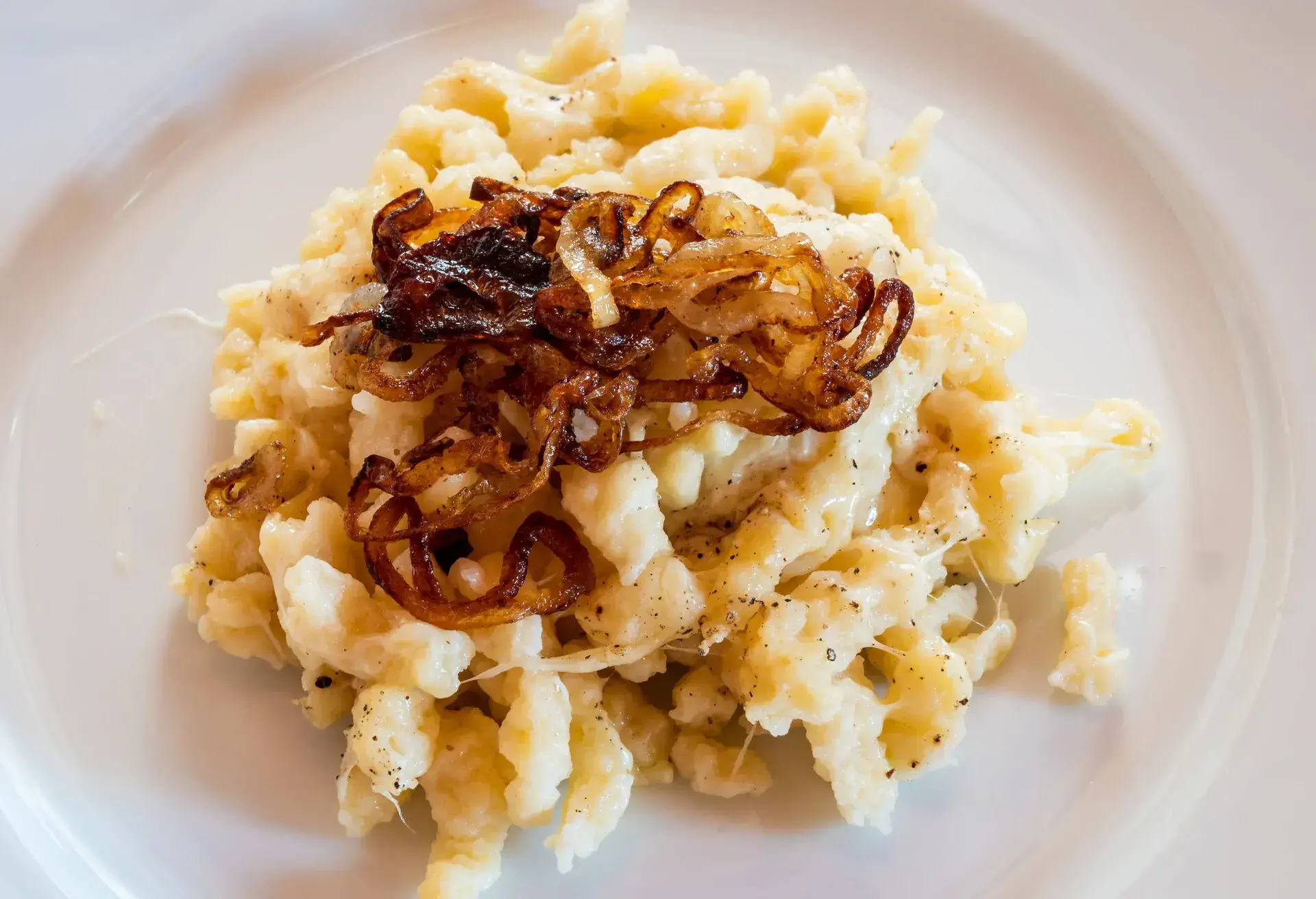
Käsespätzle is Germany’s answer to macaroni cheese. The pasta is made by mixing eggs, flour, salt, and fizzy water, which gives it its distinctive light texture. Alternating layers of pasta and cheese are then baked and topped with fried onions. Käsespätzle is said to have originated from Baden-Württemberg and can be enjoyed as a main or side dish. It’s especially tasty on a cold winter’s day in Germany after a day on the ski slopes.
9. Kartoffelpuffer
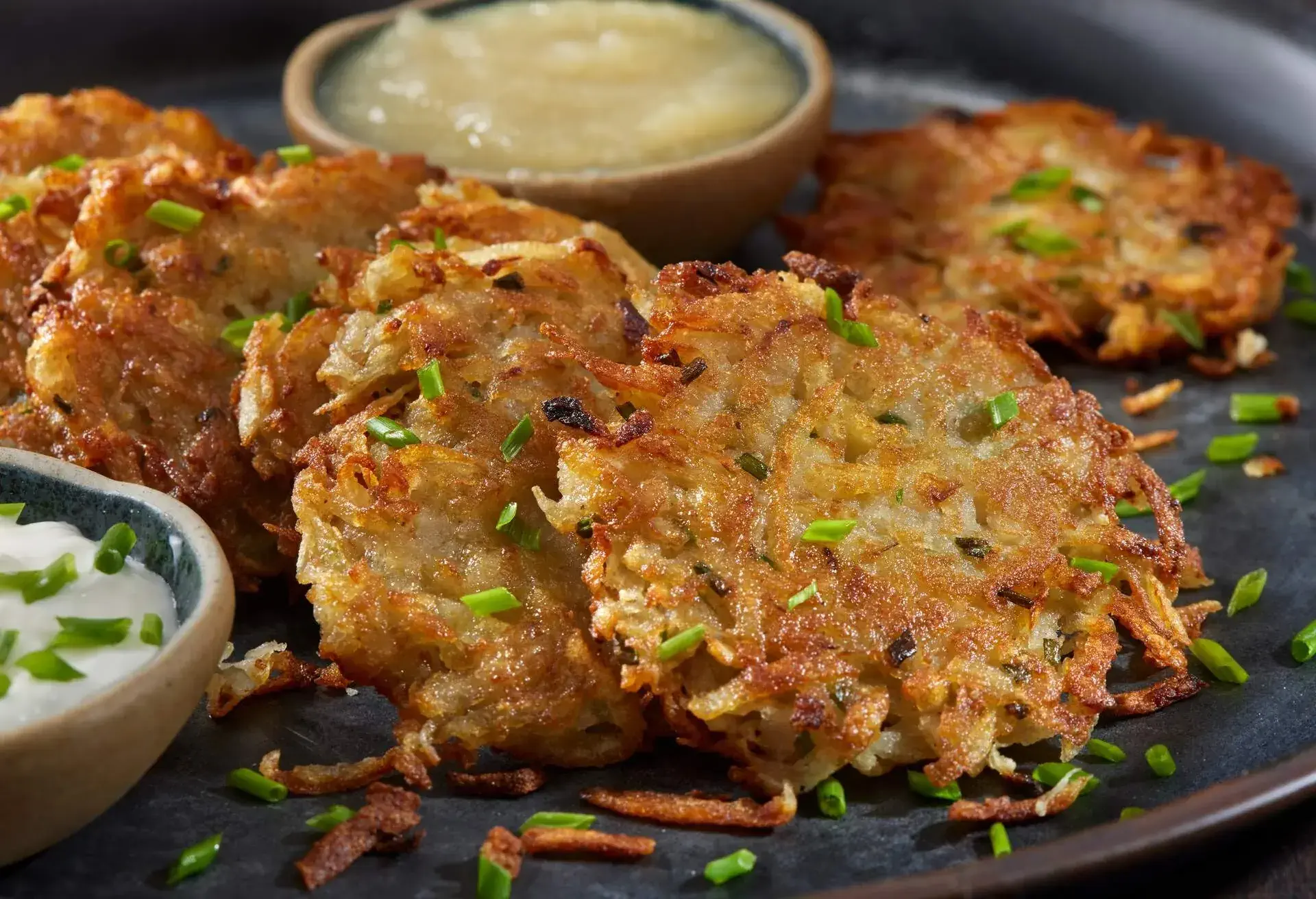
This popular, deliciously crispy morsel may be tricky to order depending on where you are, as it goes under different aliases. The more common names are Kartoffelpuffer, or when in Cologne, Reibekuchen or Reibeplätzchen.
It is a crunchy potato pancake, similar to the Swiss Roesti, made from grated potatoes, eggs, flour and seasoning. Have yours with eggs (and bacon if you’re not vegetarian) to start your day on the right foot. If you feel more adventurous, have it on rye bread with apple sauce or Rübenkraut, similar to treacle. You will be beaming with pleasure whichever way you choose to have yours.
Coffee & cake
An indulgent pastime dating back to the 17th century and originally enjoyed by the aristocracy, the tradition of coffee and cake (or kaffee and kuchen) is firmly embedded in German culture and appreciated by everyone today. There is a vast selection of cakes to be found around Germany, so here are some of the most popular.
10. Schwarzwälder Kirschtorte
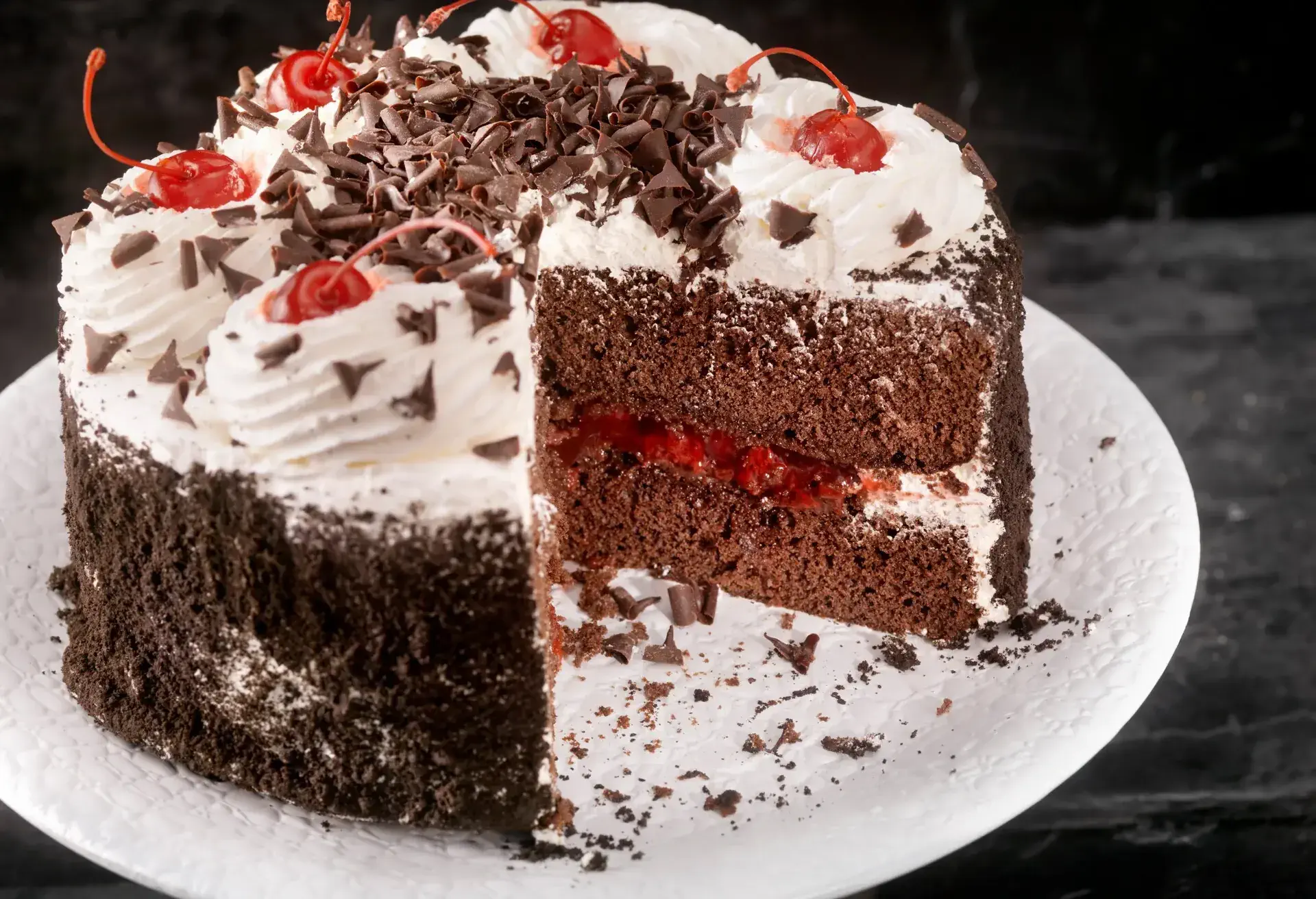
This is the cake that put the Black Forest on the map. But contrary to common belief, Schwarzwälder Kirschtorte, aka, Black Forest gateau, does not get its name from the Black Forest itself but rather the region’s famous ‘Kirsch’ liquor made from tart cherries. In fact, German law even stipulates that a cake can’t be called Schwarzwälder Kirschtorte unless it contains Kirsch.
Rich layers of chocolate sponge are sandwiched with whipped cream and sour cherries before being doused in Kirsch. Cake doesn’t get better than this!
11. Apfelstrudel
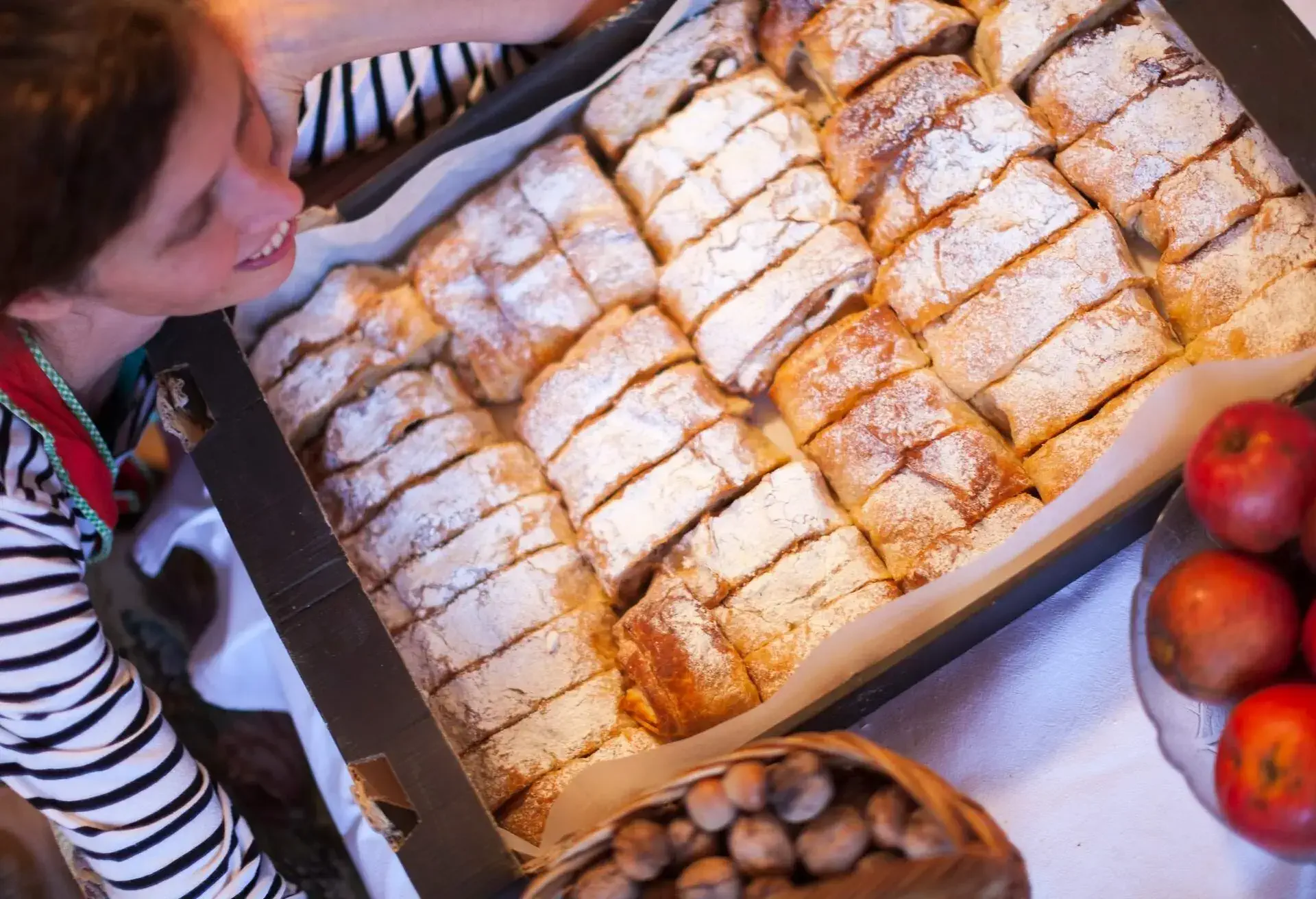
Apples and cinnamon are a match made in heaven, and in Germany, they come in the form of the delightful Apfelstrudel. Apples, sugar, and cinnamon are soaked in lemon juice, sprinkled with raisins, and wrapped in a buttery pastry before being baked in a very hot oven. The result is a crispy, crumbly case oozing with a warm tangy filling. Enjoyed with a good cup of coffee, the world suddenly feels like a very good place to be.
More German inspiration
Sold on a trip to Germany purely by its culinary offering? I don’t blame you. You’ll find all of these above treats served at restaurants across the country’s best cities and towns. Plus, you could combine your gastronomic adventure to coincide with one of Germany’s many fantastic festivals – including those centred entirely around food.
1

